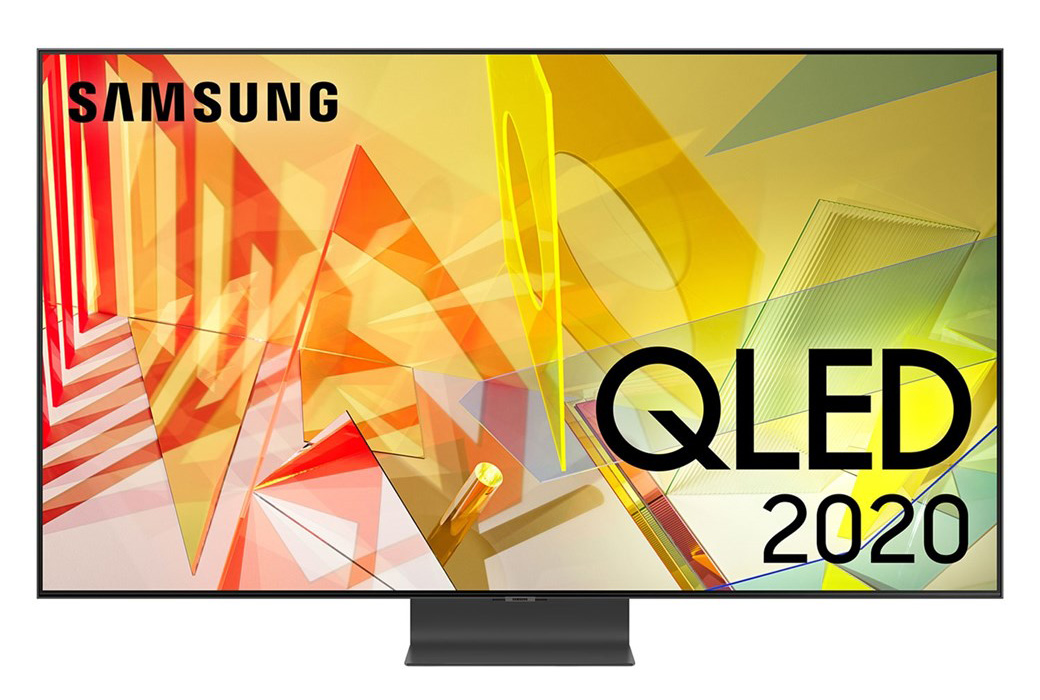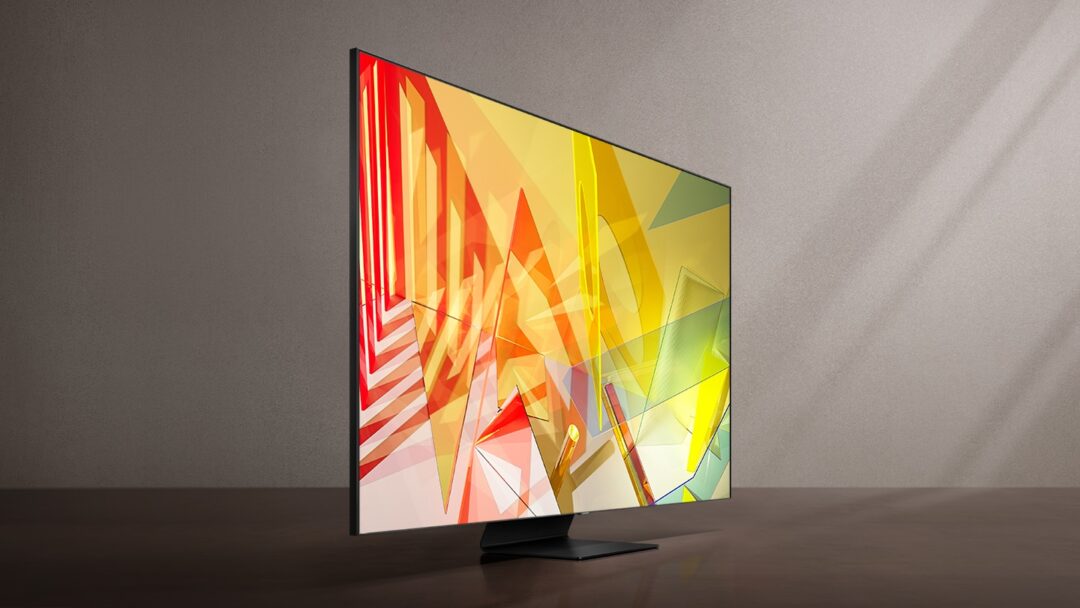Samsung has had great success with its QLED TVs in recent years: With an advanced color filter full of quantum dots plus direct LED lighting on the top models, they have achieved wonders with the otherwise aging LCD technology.
Critics will probably claim that Samsung uses all the tricks in the book to keep LCD alive for a few more years: There are rumors that the Koreans will soon phase out LCD in favor of new and modern QD-OLED technology.
But let rumors be rumors: LCD is still a reliable and well-proven technology, which can be constantly improved and patched. It is also cheap to mass produce, especially in screen sizes from 65 “and up, which is becoming increasingly popular.
For those who want a top-notch QLED model, but are not interested in paying the fee for 8K resolution, the Samsung Q95T may be an interesting alternative. It offers pretty much everything except the 8K resolution itself, at a significantly lower price.

Samsung Q95T: Full-featured 4K model
The Q95T boasts the most well-equipped 4K display you can buy from Samsung this year. Sure – there are even more expensive and more exotic 8K models in the range, but as long as we stick to 4K resolution, it is the Q95T model that ranks at the top. The screen size starts at 55 “and goes all the way up to 85”.
In terms of equipment, the Q95T has a lot in common with its little brother Q90T. In fact, these two Samsung models are completely identical in terms of image. However, the Q95T boasts two features that will make it more user-friendly for many: The separate One Connect junction box that facilitates hidden wiring. as well as the option of No Gap wall mounting, which makes wall mounting easier and more elegant. The Q90T, on the other hand, has to do with the usual VESA mount and connections at the back – but if you just want to put the TV on a shelf, it can be an equally good buy.
Design
The Q95T has a sleek and sleek design in the familiar Samsung style. It has only a thin frame around the screen, where the image goes almost completely to the edges. For a direct LED TV to be, it is also relatively slim in depth: Slightly thicker than the thinnest OLED screens, but nothing that bothers. The centrally mounted base makes the TV easy to place, while there is plenty of space for a soundboard.
Ease of use and features
Samsung is a well-known manufacturer of Android phones, but for TV use they have chosen their own system. The Tizen user interface is one of the best on the market in our opinion, as it is both quick and easy to set up. Here it is easy to get an overview of available apps and program offers (you can customize the menu bar yourself) or make settings.
The selection of streaming services is very good: With both Netflix, Apple, Amazon, HBO, Rakuten and soon also Disney +, there is plenty of content to frolic in.
In these home office hours, it may also be worth mentioning the Remote Access feature. It allows you to stream and display the PC screen directly on the TV, and work via the TV with keyboard and mouse.
Another novelty on the 2020 models is the Smart View feature, which allows you to display your mobile screen next to the TV content. Here it is also possible to listen to the other “screen” via the headphone output, which is useful if two people share the screen.
The Q95T also has Ambient Mode, which is Samsung’s smart screen saver. When the screen is in standby, it can display everything from family photos to weather information, or colors and graphics that blend in with the surroundings.
When it comes to HDR video, Samsung does not have as wide a format support as LG. The Q95T supports standard HDR10 and the dynamic HDR10 + format, but the most popular (and perhaps best) DolR Vision HDR format excels with its absence. Samsung is now the only one of the major TV manufacturers that does not support the Dolby format, which we find a bit strange, as they already have a good collaboration with Dolby on the audio side (Atmos 3D audio).
Samsung LG, like LG, can also boast HDMI 2.1, but only on one of the inputs. It supports 4K / 120p Variable Refresh Rate (VRR) and Auto Low Latency Mode (ALLM). It bodes well for future compatibility with the next generation of gaming consoles Playstation 5 and Xbox Series X. The dedicated game mode is very fast, with an input layer / delay of less than 10 milliseconds (measured with Leo Bodnar input layer tests)
Image quality
As mentioned, the Q95T is the top model among the 4K screens from Samsung this year, and will take over the baton after last year’s Q90R, which we also named the best TV of the year in the high-end class in 2019. Like last year’s model, it is a top-trimmed LCD TV with QLED color filter and direct LED backlight. The Q95T has also got Samsung’s Wide Angle filter which will improve the viewing angle. It also has a special surface treatment (Ultra Black Filter) that reduces reflection of the surroundings.
At one point, the Q95T actually takes a step backwards from the Q90R: The direct LED taillight must cope with fewer dimming zones than last year’s model. The most advanced taillight with the most individual zones is now reserved for the 8K models. Here it may seem that Samsung has taken out the “saving knife” a bit compared to last year’s model. At the same time, the Koreans claim that they have achieved improvements in power management and image processing, which may help even out the difference.
Superb contrast filter
One feature we want to highlight is the Ultra Black filter, which absorbs / filters away a lot of stray light from the surroundings. This is a feature you only get on Q90T / Q95T and up, which has a BIG impact on the visual result.
Sound quality
Samsung Q95T comes with a new finesse on the sound side, more specifically Object Tracking Sound. In addition to the usual undermount speakers, there are some extra speakers at the top of the back, which will help to create a larger sound image.
The Samsung screen provides relatively good sound on its own: here there is good clarity in the voices, in addition to nice fullness in the bass. The extra speakers also help to make the sound more airy and better spread. But of course there is no substitute for a separate soundboard!
If you want to take full advantage of the sound, you should of course add on with an Atmos soundboard, which can transmit the audio signal from the TV in high quality via the HDMI eARC connector.
Samsung has also added a small bonus to those who buy a new 2020 model soundboard from them: Then you can use the new feature Q Symphony, which utilizes the TV’s own speakers in combination with the soundboard. We became acquainted with this feature during the test of the Q80T, and experienced that it gave a significantly expanded sound image.
Conclusion
Q95T is Samsung’s best 4K TV for the model year 2020. Here you get both slightly better picture quality and more smart solutions than the other QLED models, at a slightly higher price. The Samsung screen is equipped with direct LED taillights that contribute to superb contrast. The black level is not as impressive as competing OLED screens, something many will notice especially in a darkened room. On the other hand, the Q95T has an advantage in brighter environments: Here there is always plenty of brightness, and no problems with reflections. For varied TV use, this is still a favorite!

We think
Samsung Q95T er en velutstyrt TV med imponerende kontrast og saftig lysstyrke, og har et smart skjermfilter som reduserer refleksjoner. Q95T må klare seg uten det populære HDR-formatet Dolby Vision. Enda så finmasket LED-lyset er, blir ikke lysfordelingen like presis som en OLED-skjerm.
2499 €
Specifications
- Size / type: 65 ”4K QLED-LCD
- Resolution: 3840×2160 (4K Ultra HD)
- Operating system: Tizen
- Inputs: 4 HDMI (1 x 2.1), 3 USB
- Outputs: Optical digital audio output, HDMI eARC
- HDR: HDR10 +
- Other: One Connect box

